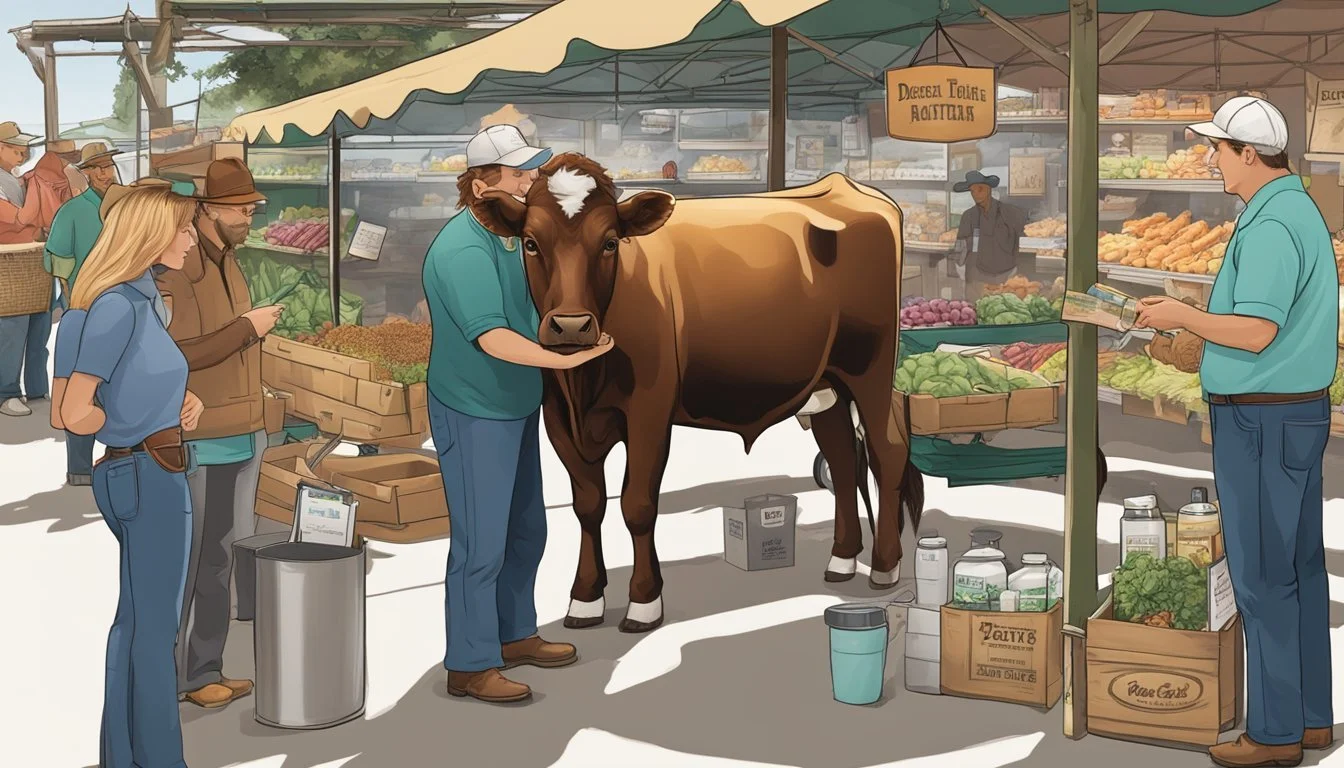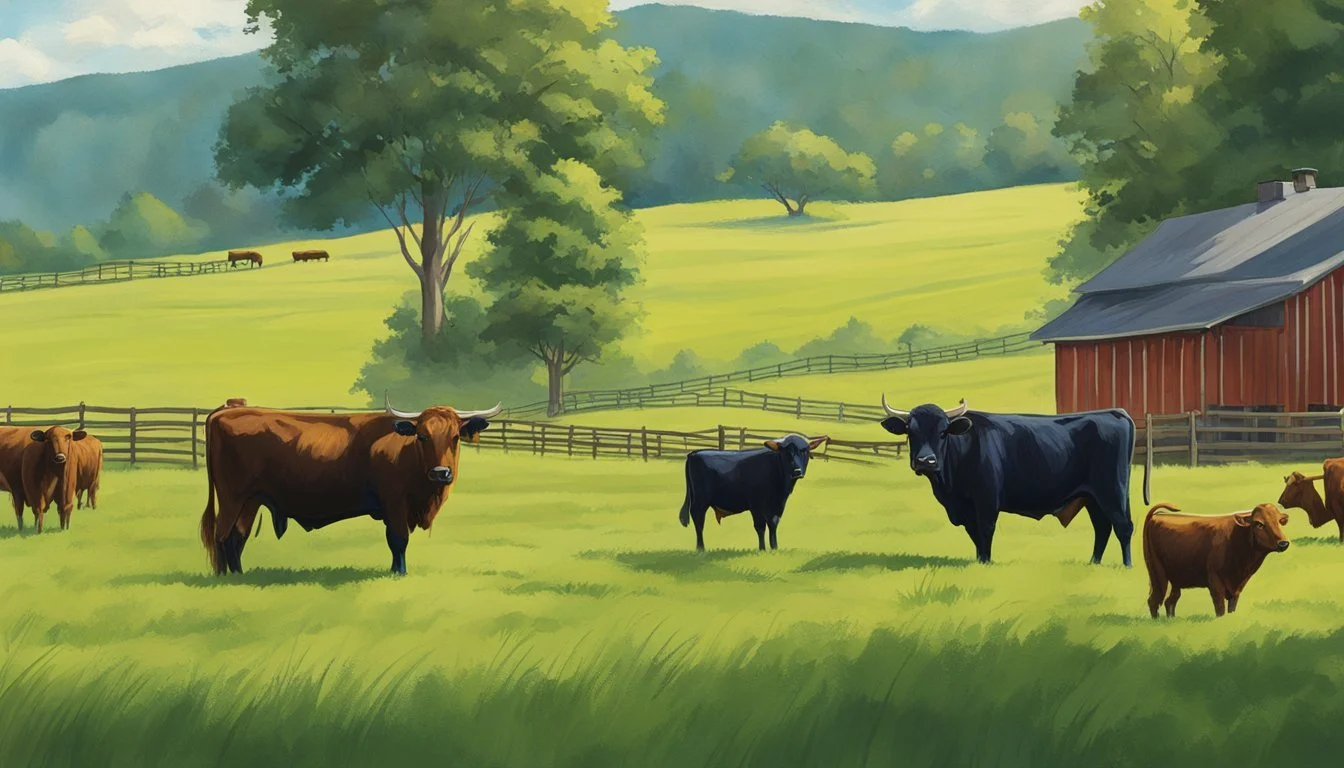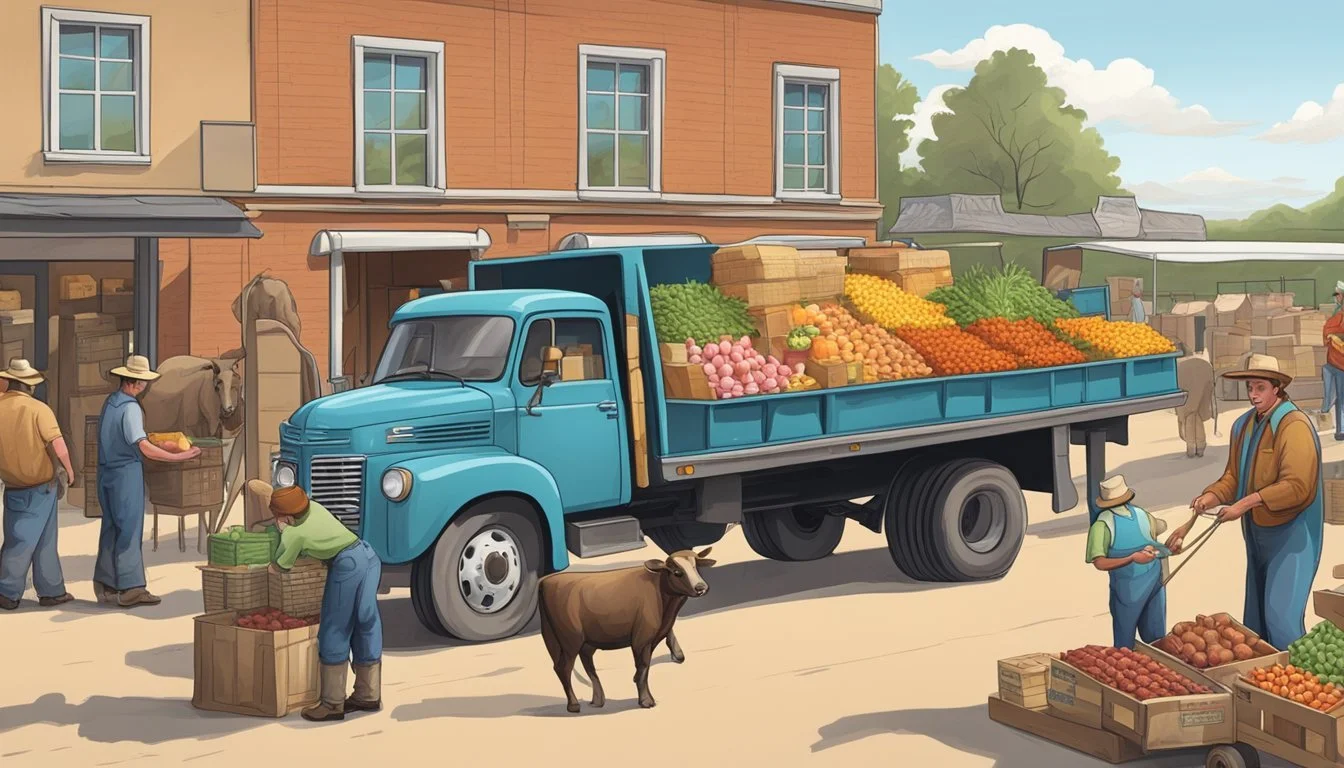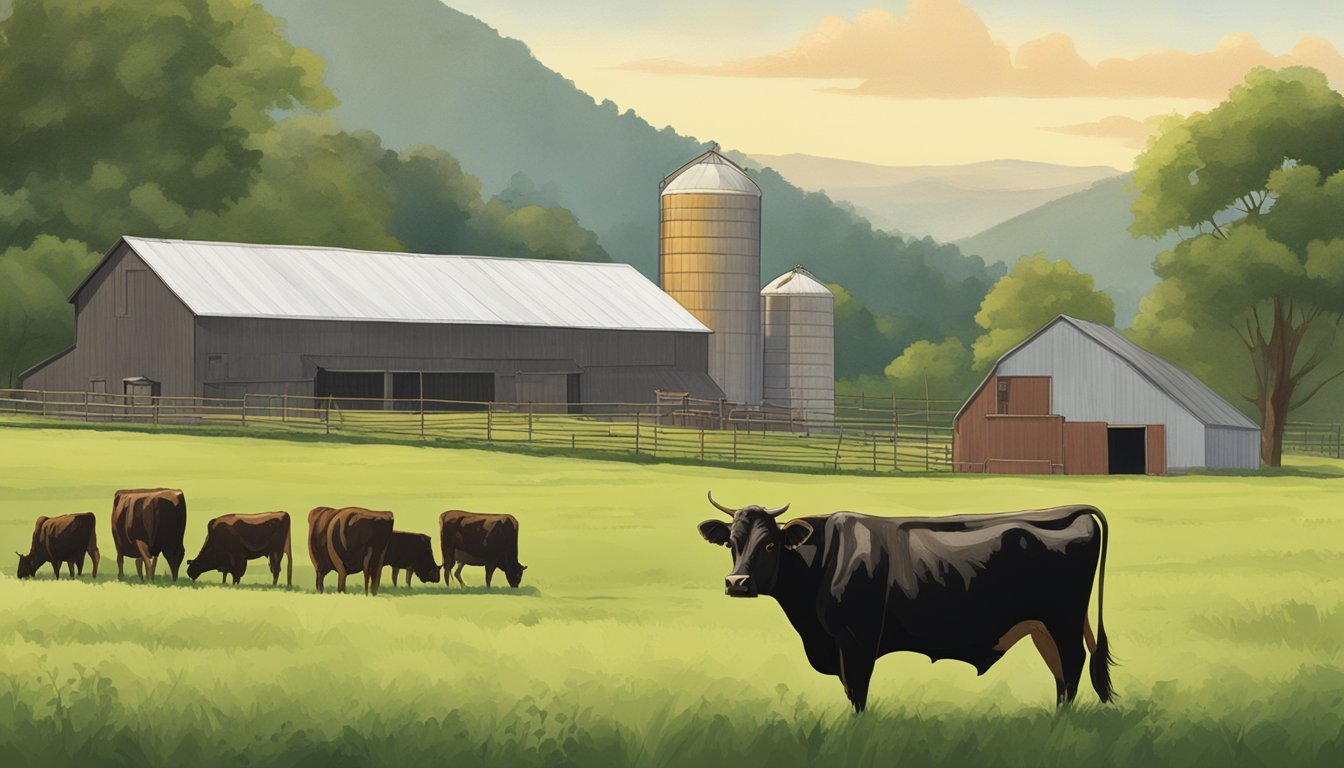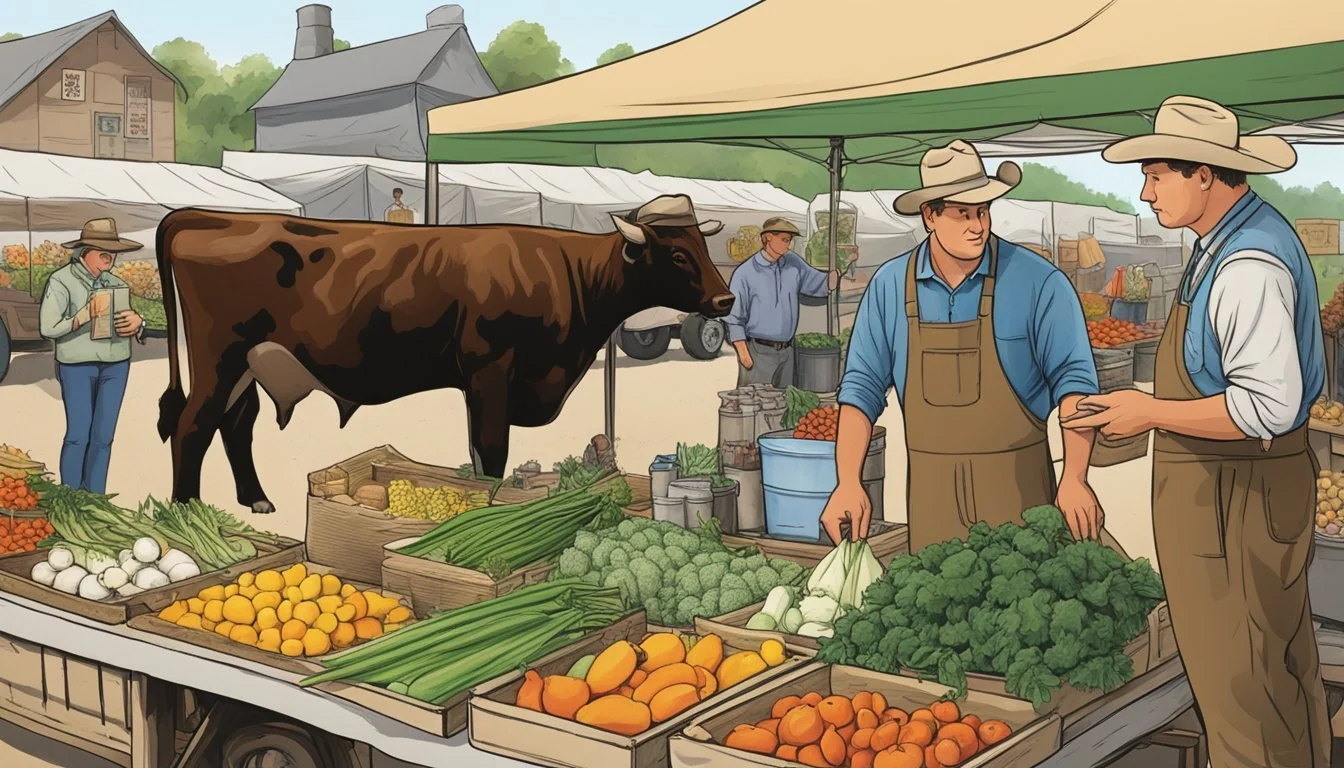How to Market Your Dexter Cattle Products Locally
Effective Strategies for Community Engagement
Marketing Dexter cattle products locally involves a strategic approach tailored to the smaller size and unique advantages of this cattle breed. Dexter cattle, known for their hardiness and dual-purpose nature—providing both beef and milk—are a suitable option for niche markets focusing on local and sustainable farming practices. Producers looking to sell Dexter products locally should focus on understanding consumer preferences, which often include an appreciation for the breed's grass-fed potential and smaller beef cuts suitable for smaller families or individuals.
To tap into the local market effectively, it is crucial for Dexter cattle farmers to establish a transparent and trustworthy relationship with consumers. This can be fostered through direct marketing efforts that include engaging storytelling of the farm's practices, the benefits of purchasing locally, and the specific qualities of Dexter cattle products. A direct marketing plan should outline clear goals, identify the target customer base, and detail the channels through which the products will be marketed, such as farmers' markets, community-supported agriculture (CSA) programs, or direct sales to local restaurants focusing on locally-sourced ingredients.
Additionally, group marketing strategies, where producers combine their products for larger sales, can be beneficial. By grouping same-size and same-age calves, farmers can cater to the volume demands of certain buyers and potentially secure better prices. When selling live animals, standard practices such as dehorning, vaccinating, castrating, and weaning should be followed to optimize both animal welfare and market value. Keeping a keen eye on local market prices and trends will support informed decision-making and bolster a farmer's ability to adapt to changing market demands while maintaining the profitable sale of Dexter cattle products.
Understanding Dexter Cattle
In this section, we will provide you with crucial information about Dexter Cattle, including their unique breed characteristics, genetic benefits and adaptability, and suitability for small-scale farming.
Unique Breed Characteristics
Dexter Cattle hail from Ireland and are known for their petite structure, which does not compromise their robustness or productivity. These cattle can come in three colors: black, dun, and red. They typically exhibit a broad body with well-rounded hindquarters and can have either short or long legs. While originally horned, selective breeding has produced many naturally polled (hornless) individuals.
Genetic Advantages and Adaptability
Dexter Cattle possess genetic traits that enable them to thrive in various environments, exhibiting remarkable adaptability. They are hardy animals, capable of adjusting to both harsh and mild climates. This adaptability often results in less need for intensive management and fewer resources to maintain health and productivity. Their resilience contributes to their appeal for farmers who are confronted with changing climate conditions or diverse environmental challenges.
Size and Efficiency for Small Farms
The small size of Dexter Cattle is a distinct advantage for small-scale farming operations. They require less feed than larger breeds, without a proportional decrease in meat and milk production, thus providing:
Efficiency: More economical feed-to-product conversion rates.
Manageability: Easier handling and lower physical infrastructure demands.
Small farms and homesteads find that the Dexter breed's size, approximately half that of a traditional beef cow, suits their space restrictions and allows for more manageable herding and pasture maintenance. The breed's efficiency and tractability make it an optimal choice for local farmers seeking to market their cattle products within their community.
Benefits of Grass-Fed Dexter Beef
Grass-fed Dexter beef is renowned for its exceptional quality and numerous health benefits. This section delves into the specifics of why consumers often prefer grass-fed products, from the nutritional value to environmental advantages.
Nutritional Value and Quality
The nutritional content of Dexter beef is significantly enhanced when the cattle are grass-fed. These beef products are typically higher in Omega-3 fatty acids and have a better ratio of Omega-6 to Omega-3, which is crucial for heart health. Dexter beef is naturally lean, yet it retains excellent marbling that contributes to its tenderness and flavor. Consumers can rely on grass-fed Dexter beef for:
Higher levels of CLA: Conjugated Linoleic Acid, associated with reduced body fat and other health benefits.
Increased Vitamin E: An antioxidant that may help boost the immune system.
Consumer Preferences for Grass-Fed Products
Consumer demand for grass-fed beef products continues to grow, fuelled by a rising awareness of health benefits and quality. Grass-fed Dexter beef, with its rich taste and tenderness, satisfies the market's preference for naturally raised, quality beef without the use of growth hormones or unnecessary antibiotics.
Transparency: Grass-fed product labels offer consumers peace of mind about animal welfare and sustainable farming practices.
Flavor Profile: Connoisseurs often note that grass-fed Dexter beef offers a distinct, robust taste compared to grain-fed alternatives.
Environment and Climate Considerations
Grass-fed Dexter cattle farming practices have a reduced impact on the environment compared to conventional beef production methods. Sustainable grazing techniques can lead to:
Soil Regeneration: Improved soil health through natural grazing patterns.
Carbon Sequestration: Grasslands sequester carbon, potentially reducing greenhouse gas emissions.
By choosing grass-fed Dexter beef, consumers support farming methods that are more in tune with natural processes, promoting biodiversity and ecological balance.
Marketing Strategies for Local Sales
Effective marketing strategies are crucial for the local sales success of Dexter cattle products. Tailoring these strategies to the local market and utilizing various tools and platforms can significantly enhance visibility and profitability.
Understanding Your Local Market
Identifying local demand patterns is the first step in successful marketing. Farmers should conduct research to understand what products are in demand, at what price points, and during which seasons. Local agricultural reports and direct feedback from potential customers provide valuable insights. They should also assess the competition to find a unique selling proposition for their Dexter cattle products.
Building a Brand and Community Presence
Developing a strong brand identity helps in creating a lasting impression. Key aspects include:
Logo and Tagline: A recognizable logo and a memorable tagline that encapsulates the farm's values.
Storytelling: Sharing the farm's story to forge a personal connection with the community.
Community Engagement: Hosting farm visits and attending local farmers' markets can build a loyal customer base.
Leveraging Social Media for Direct Marketing
Social media platforms are a cost-effective way to reach local buyers. They should consider:
Platform Selection: Choose platforms where potential customers are most active.
Content Creation: Post engaging content that highlights the quality and benefits of their products.
Interactions: Engage with the audience by responding to comments and messages promptly.
Partnering with Local Restaurants and Stores
Creating partnerships with local restaurants and stores can expand reach. Farmers should:
Provide samples to chefs and store managers to showcase the superior quality of Dexter beef.
Offer flexible supply options and emphasize the benefits of sourcing locally for freshness and community support.
By employing these strategies, farmers can effectively market their Dexter cattle products within the local community.
Sales and Distribution Channels
Selecting effective sales and distribution channels is critical for local farmers to successfully market their Dexter cattle products. The approach should marry the farmers’ ability to meet demand with the consumers’ desire for accessible, fresh local products.
Direct Market Approaches
Farmers can sell their Dexter cattle products directly to consumers, bypassing traditional middlemen. This direct market method often includes options such as farmers’ markets, on-farm stores, and e-commerce websites. Consumers appreciate buying locally as it guarantees freshness and traceability of the beef they purchase. Additionally, selling in quarters, halves, and whole options can cater to varying consumer needs.
Collaborations with Local Farmers and Breeders
Building relationships with other local farmers and breeders can open doors to new market opportunities. These collaborations can lead to cooperative storefronts or aggregated marketing efforts where products from different farms are sold collectively. Working together can expand one's reach and establish a stronger presence in the local market.
Selling Quarters, Halves, and Whole Cattle
Customers may opt to buy larger quantities of meat, such as a quarter, half, or a whole Dexter cattle, commonly known as bulk purchasing. Local producers can facilitate this by offering butchering and processing services, with clear pricing structures based on hanging weight or type of cuts requested. This option requires effective communication about the timeline, delivery, and specifics of the order.
Product Quality and Processing
When marketing Dexter cattle products, maintaining high-quality meat and professional processing methods are paramount for attracting customers. Proper handling from pasture to packaging can significantly influence product appeal.
Ensuring Meat Quality and Freshness
The quality of beef begins with animal husbandry practices. Dexter cattle should be raised on a diet that promotes healthy growth and high-quality meat, typically consisting of well-managed pasture and supplemented with necessary minerals and forage to ensure balanced nutrition. High-quality beef is often characterized by its marbling, the intramuscular fat that contributes to flavor and tenderness.
Freshness is also a critical factor in meat quality. Meat should be processed and refrigerated as quickly as possible after slaughtering to preserve its freshness and prevent spoilage. This quick turnover from farm to table is a compelling selling point for Dexter beef.
Understanding Processing and Butchery
Choosing a Processor: Partner with a reputable meat processor. They should uphold standards that align with animal welfare and meat quality requirements.
Processing Steps: Beef processing includes slaughter, aging, cutting, and packaging. Aging meat properly can enhance tenderness and flavor.
Cuts of Beef: Dexter cattle offer a variety of cuts, from ribeye steaks (What wine goes well with ribeye steak?) to brisket. Educate yourself on the best practices for butchery to ensure each cut is handled with care to maximize taste and presentation.
Packaging and Presenting Products for Sale
Packaging: It should keep the meat safe and fresh while also being visually appealing to consumers. Use materials that protect against contamination and clearly label the packaging with cut names, weights, and expiration dates.
Presentation: The visual appeal of your product can affect a buyer's decision. Neatly trimmed cuts, consistent packaging, and professional branding can help establish a premium image for your products. Consider how your product is displayed at markets or in stores—proper presentation can make a significant difference in sales.
By adhering to high standards of quality and processing, and with attention to packaging and presentation, producers can effectively market their Dexter cattle products in a local market.
Pricing and Economics
Effective pricing strategies and economic insights are crucial for the success of local Dexter cattle product marketing. By setting well-balanced prices, understanding the pandemic's economic impact, and aligning costs with consumer demand, producers can navigate the market effectively.
Setting Competitive Prices While Ensuring Profit
Producers must determine the live weight price for Dexter cattle, which typically ranges from $1.50 to $2.00 per pound. Prices should be set competitively to attract buyers yet high enough to cover costs and ensure a reasonable profit margin. Factors in cost calculations include feed, veterinary care, and marketing expenses. It's essential to analyze local market trends regularly.
Analyzing the Economic Impact of the Pandemic on Local Sales
The pandemic has shifted the economy significantly, affecting consumer behavior and demand. Local sales have been impacted by:
Supply chain disruptions leading to varying feed and processing costs.
Changes in consumer purchasing patterns, with an increase in demand for local, sustainably-raised beef.
Producers need to adapt to these changes by adjusting their marketing strategies to maintain profitability in the shifting economic landscape.
Balancing Costs with Consumer Demand
The success of local Dexter cattle product marketing rests on the ability to balance the production costs with what consumers are willing to pay. Demand for Dexter beef is influenced by its perceived quality and the narrative of local, sustainable production. Producers should:
Monitor feed and maintenance costs closely to manage production expenses.
Engage with consumers to gauge demand and adjust pricing accordingly.
Offer a range of products, from premium cuts to value offerings, to cater to different consumer segments.
By considering these entities and maintaining transparency with customers, producers can create a reliable and profitable pricing strategy.
Engaging with the Dexter Cattle Community
The Dexter cattle community offers a range of resources and events that are pivotal for farmers looking to market Dexter cattle products locally. Through active engagement, one can access valuable information, increase visibility, and create beneficial relationships within the industry.
American Dexter Cattle Association (ADCA) Resources
The American Dexter Cattle Association provides essential support for Dexter cattle farmers. The ADCA's resources include educational materials, guidelines for best practices, and updates on breed standards. Farmers should utilize these tools to ensure their products meet quality standards and appeal to informed consumers. Contacting the ADCA through their website or phone number can offer direct assistance and further resources.
Participation in Cattle Shows and Events
Cattle shows and local events serve as excellent venues for showcasing Dexter cattle and their products. Participation not only raises the farm's profile but also allows the farmer to engage with a captive audience interested in cattle. These events sometimes feature competitions, which can be an opportunity to earn recognition for the quality of one's cattle. Information on upcoming events can often be found through the ADCA or local farming community groups.
Networking and Establishing Contacts Within the Community
Networking is a foundational element of successfully marketing Dexter cattle. Establishing contacts with peers, local businesses, and potential customers creates a support system and potential sales channels. Engaging with other farmers at community gatherings, online forums, and regional farm groups can provide insights into local market trends and consumer preferences. Personal relationships bolstered by regular communication are key to a thriving Dexter cattle business.
Managing Customer Relationships and Expectations
In marketing Dexter cattle products locally, managing customer relationships and expectations is a crucial aspect. Achieving customer satisfaction through trust, attentiveness, and consistent communication can lead to repeat business and a solid local market presence.
Fostering Trust and Repeat Business
Consumer trust is foundational in the livestock market, where quality and ethical practices command premium prices. Producers can establish trust by ensuring their Dexter cattle are raised and processed following the highest standards. Showcasing transparent practices, such as allowing farm visits and sharing detailed product information, encourages consumer confidence. Repeat business follows when customers feel assured that they are purchasing from a trusted source.
Responding to Consumer Needs and Feedback
Understanding customer needs is vital for tailoring products and services. Producers should actively solicit and respond to feedback, showing they value their customers' opinions. Feedback channels can include:
Surveys: Post-sale surveys can gauge customer satisfaction and gather insights.
Direct communication: Encourage discussions at points of sale or through regular newsletters.
Social media: Utilize platforms to engage with customers and address concerns promptly.
Responding effectively to consumer needs and feedback not only enhances the product but also reinforces the customer's decision to support local business.
Maintaining Regular Contact and Updates
Regular interaction keeps customers informed about product availability, new offerings, or changes in farming practices. Methods for maintaining contact include:
Email newsletters: Provide market updates, share stories from the farm, and announce special offers.
Social media posts: Offer a glimpse into daily farm life and updates on cattle.
Community involvement: Participate in local events and farmer's markets to stay visible and accessible.
Regular updates foster a sense of community and keep the farm and its products top of mind for consumers.

